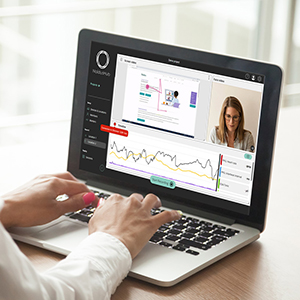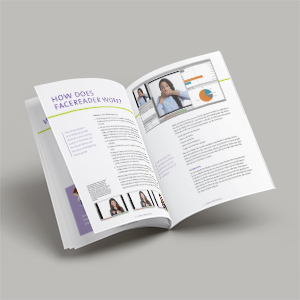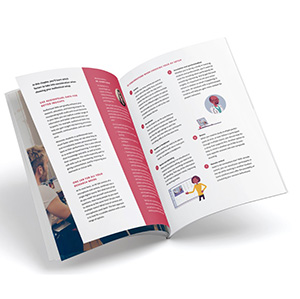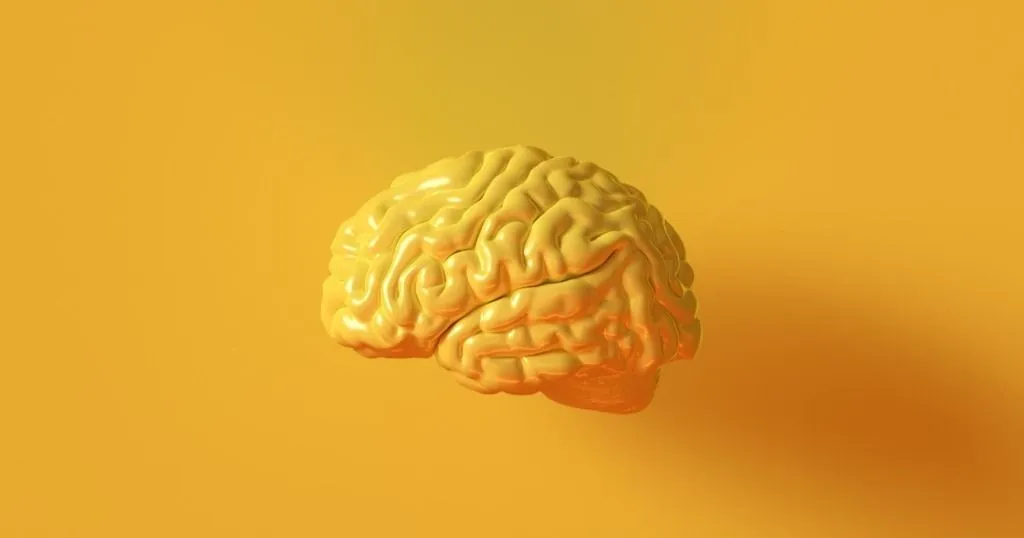Neuromarketing research: Innovative research methods and techniques

Get your face read, your brain measured, and your heart rate checked. Innovative research methods and techniques found their way into neuromarketing.
Posted by
Published on
Fri 30 Aug. 2024
For decades, marketers relied on questionnaires and interviews to understand consumer behavior, preferences, and motivations. However, these methods often fall short, capturing only the conscious thoughts of consumers while leaving their subconscious drivers unexplored. Non-verbal responses can also provide important information. Repeatedly, behavioral research has demonstrated that people often donu2019t do what they say they will do.
The rise of neuromarketing
To dive deeper into the unconscious preferences of consumers, innovative research methods and techniques found their way into the field of marketing studies. Neuromarketing, the science of understanding how consumersu2019 brains respond to marketing stimuli, has surged in popularity. This interdisciplinary field blends marketing, neuroscience, and psychology to uncover the hidden factors influencing consumer behavior.
Neuromarketing research is a field of marketing that studies consumers\' sensorimotor, cognitive, and affective response to marketing stimuli. It is an interesting mix of companies and universities that invest in neuromarketing to gather more information about consumer behavior. Medical techniques and insights of neuroscience are used to reveal consumer decision-making processes. Neuromarketers make use of neural- and physiological responses, and behavior, to understand the subconscious reactions of consumers.

Neuromarketing has become increasingly more popular
Innovative methods and techniques in neuromarketing research
Neuromarketing employs a range of sophisticated technologies to delve into the brainu2019s inner workings, capturing both neural activity and physiological responses. These tools include techniques like EEG, which records electrical brain activity, and fMRI, which tracks blood flow changes, providing a window into how specific marketing stimuli activate different brain regions.
All techniques are aimed at learning more about why consumers make the decisions the way they do, and if a part of the brain is telling them to make these decisions.
Implicit responses
Implicit responses are the body\'s automatic, unconscious reactions to stimuli, often revealing true preferences that might not surface in traditional verbal responses. These reactions are invaluable in understanding consumer behavior at a deeper, more authentic level.
To measure brain activity, researchers most commonly use EEG, MEG, or fMRI systems. For example, the subject is instructed to watch a commercial while their neuronal electronical activity is measured by using an EEG-cap. With the measured changes in brain activity, one can draw conclusions about the effects of specific elements in the commercial.
Another method to measure an implicit response is using GSR (Galvanic skin response). This method measures the electrical conductance of the skin, and can indicate whether a person is bored or tense. If a person is excited, the level of electrical conductance increases u2013 if a person gets bored, the level of electrical conductance drops.
There are more ways to measure implicit responses: blood pressure, heart rate, skin temperatureu2026 Learn more about these data acquisition systems.

Emotions and facial expressions
Basic emotions, represented by facial expressions, are not conscious and can thus deliver great information about subconscious processes. Facial expressions can tell us a lot, sometimes even more than we are aware of.
Automated analysis of facial expressions brings clear insights into the effect of different stimuli on emotions. In Neuromarketing research, especially the affective states (interest, boredom and confusion) of the participant show an added value. It tells a lot about appreciation towards commercials, brands or products.
How do you know a consumer is feeling (highly) engaged? Dayenne Sarkol-Teulings created a custom expression in FaceReader to measure the level of engagement: learn more about her validation study in this blog post.
A positive emotion towards a product can determine a positive decision. Itu2019s all about the connections that are made unconsciously. Immediately after a product or visual is introduced to the consumer, he or she feels positive or negative emotions. Researchers worldwide measure these emotions by using FaceReader, software that automatically classifies facial expressions.

Eye tracking combined with facial expression analysis
Often eye tracking technology is combined with facial expression analysis techniques to provide insight in preferences, desire, appreciation, and more. Both eye tracking and expression analysis can add substantial power to your research by providing information about attention and emotion.
Scan paths indicate for example how people look at websites and advertisements: which parts of an advertisement they actually look at and for how long they look at various items. And when a participant has previous experience with an application, the scan path of the eyes will have fewer fixations. Modern eye trackers can easily generate this information, which makes them increasingly popular in neuromarketing studies.
Combining research tools such as an eye tracker, FaceReader, The Observer XT (coding and analysis software) or multimodal research tool NoldusHub, can add substantial power to your research.
Sub-consciousness
Our own subconscious has a lot more influence on our behavior then we could ever imagine. What do we really see, notice, and what is registered in our memory? How do we make decisions? As neuromarketing continues to evolve, these innovative research methods are unlocking new possibilities in understanding and influencing consumer behavior.
By tapping into the subconscious mind, marketers can design more effective campaigns, craft messages that resonate on a deeper level, and ultimately drive better business outcomes. The better we know how the brain functions, the better we know how to influence decision making processes. Of course, advertisement placement and government campaigns can then be adjusted and made more effective.

In tools such as NoldusHub and The Observer XT, facial expressions, physiological data, eye tracking data, and video can be integrated. To provide a good overview of stimulus-response, such a tool can be of real value to your research.
Download our product overview and find out which Noldus products are suitable for your research. Or contact us now and letu2019s elevate your research and build your ideal research set-up!
Related Posts

Cognitive neuroscience: Behavior

Measuring creativity at the GrunbergLab
